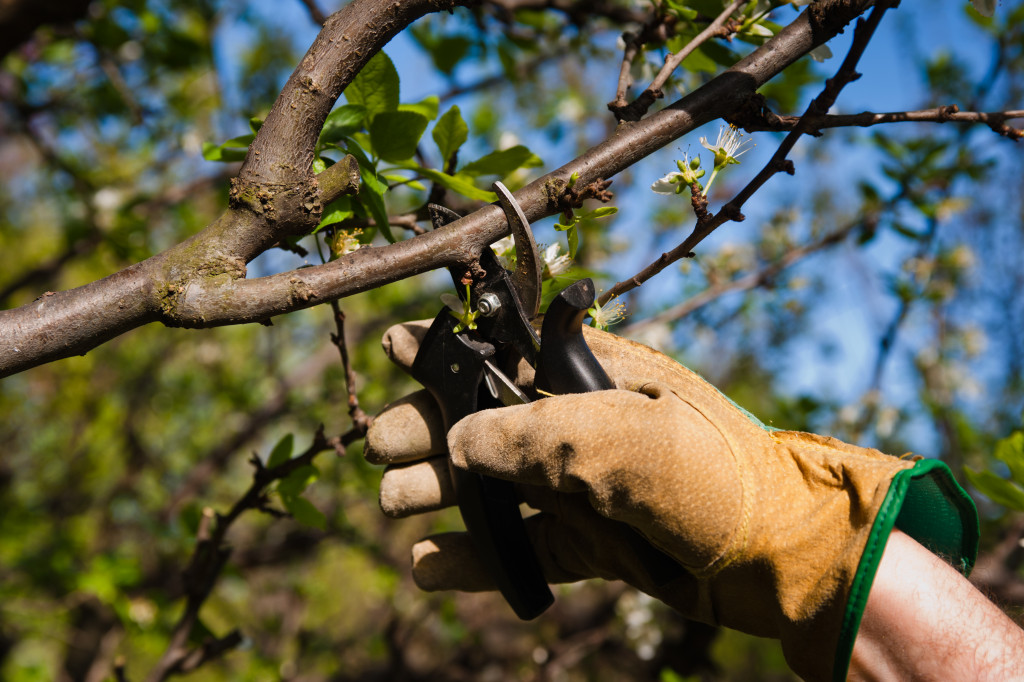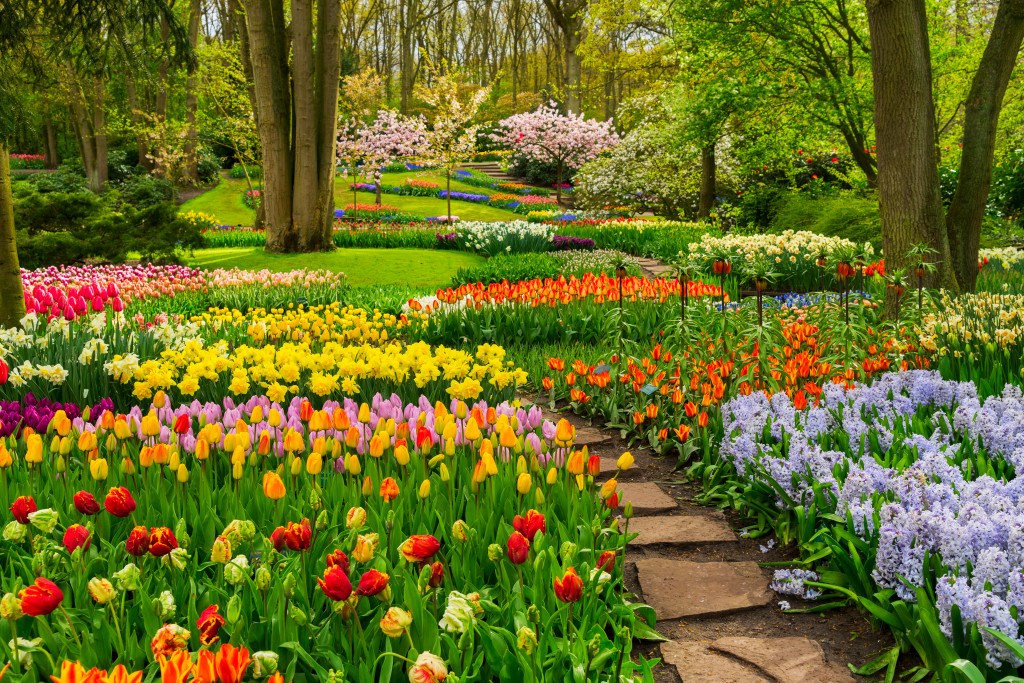- Expertly pruning trees and shrubs regularly promotes optimal shape and vigorous growth.
- Regularly watering green spaces is crucial to nourish root systems, promote healthy growth, and prevent potential damage.
- Mulching effectively blocks sunlight, preventing weed seeds from germinating.
- Plants should be regularly fed with fertilizer and compost to ensure they receive nutrients. This practice is crucial for optimal growth and development.
Maintaining your home’s green spaces is important for your property looking its best. Not only do well-maintained lawns and gardens add to the aesthetic appeal of a house, but they also provide much-needed oxygen and can even improve air quality.
With proper maintenance and upkeep, you can ensure that your green spaces remain healthy and vibrant for years. Here are some tips on maintaining and caring for your home’s green spaces to keep them looking their best.
Take care of your plants.
Taking care of your plants is essential to their health and growth. Here are some tips on how to properly care for your plants:
Prune trees and shrubs regularly for a better shape.

Properly pruning trees and shrubs is an important maintenance and upkeep tip for any green space. Regular pruning helps to maintain the shape and overall health of your plants. This involves removing dead or damaged branches, thinning out dense growth, and shaping the plants to promote healthy growth patterns.
Hiring reputable tree surgeons is important to ensure it is done correctly and safely. They have the proper training and tools to assess the plants and determine the best pruning method accurately. Other options for pruning include using shears or pruning saws for smaller plants or investing in a pole pruner for taller plants. Regardless of the method, regular pruning can transform the look of your green space and benefit your plants in the long run.
Water your green spaces regularly.
Properly watering green spaces is essential to maintaining the health of your plants and grass. It involves regularly providing enough water to nourish the root systems of your greenery and ensuring that they have an adequate supply of moisture to thrive.
Proper watering helps to prevent plant diseases and insect infestations that can harm the longevity of your green spaces. Without proper watering, green spaces can quickly become dry and wilted, leaving you with a lifeless landscape that is both unsightly and unhealthy.
Watering your green spaces consistently and correctly ensures that your property remains lush, vibrant, and inviting. A little attention to this important maintenance task can make all the difference in the beauty and health of your home’s green spaces.
Use mulch to help keep weeds away.

Mulching is a smart technique that gardeners utilize to prevent the growth of weeds in their garden beds. It involves spreading a layer of organic material such as leaves, straw, or wood chips on top of the soil, a physical barrier that blocks the sunlight from reaching weed seeds.
Additionally, as the mulch decomposes, it enriches the soil with the nutrients needed for healthy plant growth. One of the primary benefits of using mulch is that it reduces the need for herbicides, which can harm beneficial insects. Therefore, incorporating this technique into your garden maintenance routine can help keep your green spaces healthy and thriving.
Feed plants with fertilizer and compost when needed.
For any gardening enthusiast, it’s essential to remember that plants require proper nourishment to thrive. This is where fertilizers and compost come in handy. Fertilizers are nutrient supplements that enhance the growth of plants, while compost is the decomposed organic matter that provides essential nutrients for the soil.
These elements can significantly improve the health and robustness of your green spaces. Regular feedings with fertilizer and compost provide the necessary nutrients, help to prevent plant diseases, and promote consistent growth and blooming.
Additionally, it is an eco-friendly and cost-effective way to maintain a healthy garden. Feeding plants with fertilizer and compost can help them bloom and thrive in your green space.
Check for insects or pests that may be damaging plants.
As an important part of plant maintenance and upkeep, checking for insects or pests damaging plants is crucial to ensure their healthy growth and productivity.
This process involves examining all parts of the plant, including its leaves, flowers, and roots, for any signs of infestation or damage. By identifying and addressing the issue early on, homeowners can prevent further damage to their green spaces and save money on costly repairs or replacements in the long run.
Cut grass at the right height.
One of the most important aspects of maintaining a healthy and attractive patch of grass is ensuring that it is cut at the correct height. This means finding the ideal balance between removing enough of the blades of grass to keep the lawn looking neat and tidy but not so much that too many of the grass’ vital resources are lost.
When grass is left too long, it can become weak and susceptible to disease, pests, and weeds, while cutting it too short can cause the roots to weaken, leading to brown patches. Finding the right height for each type of grass will depend on factors such as weather conditions, soil type, and frequency of watering, but with a little research and a careful hand, your lawn can easily become the envy of the neighborhood.
These are just a few tips on maintaining and caring for your home’s green spaces. By performing regular maintenance and care, you can ensure that your property stays healthy and full of vitality for many years.

